Niclosamide ethanolamine salt
- CAS NO.:1420-04-8
- Empirical Formula: C15H15Cl2N3O5
- Molecular Weight: 388.2
- MDL number: MFCD01941566
- EINECS: 215-811-7
- SAFETY DATA SHEET (SDS)
- Update Date: 2024-12-18 14:08:57
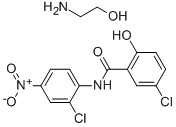
What is Niclosamide ethanolamine salt?
Chemical properties
Depending on purity, a bright yellow or brownish-yellow crystalline solid or powder. Odorless. Soluble in water
The Uses of Niclosamide ethanolamine salt
The ethanolamine salt as a molluscicide.
General Description
Yellow solid. Insoluble in water.
Air & Water Reactions
Insoluble in water.
Reactivity Profile
Niclosamide ethanolamine salt is hydrolyzed by concentrated acid or alkali.
Fire Hazard
Flash point data for Niclosamide ethanolamine salt are not available. Niclosamide ethanolamine salt is probably combustible.
Agricultural Uses
Molluscicide: Niclosamide, the parent chemical, is a relatively selective, non-cumulative chlorinated aromatic amide pesticide. Clonitralid (ethanolamine salt of Niclosamide) is used principally against molluscs, especially fresh water snails and to control sea lamprey larvae and also as an antiparasitic drug in human, pets and livestock. Niclosamide is toxic to all fish species at 0.5 mg/L (48 hours). A U.S. EPA restricted Use Pesticide as Niclosamide. Limited to use by a certified applicator [40 CFR 152.175 (a) (7/1/94)]. Not listed for use in EU countries. Registered for use in the U.S.
Trade name
BAY 73® and U.S. Fish and Wildlife Service; BAY 6076®; BAYER 73®; BAYER 25648®; BAYLUSCID®[C]; BAYLUSCIDE® and U.S. Fish and Wildlife Service; M 73®; MOLLUSCICIDE BAYER 73®; NICLOSAMIDE®; SR 73®
Potential Exposure
Niclosamide, the parent chemical, is a relatively selective, noncumulative chlorinated aromatic amide pesticide. Clonitralid (ethanolamine salt of niclosamide) is used principally against molluscs, especially fresh water snails and to control sea lamprey larvae and also as an antiparasitic drug in human, pets, and livestock. Niclosamide is toxic to all fish species at 0.5 mg/L (48 hours). A restricted use pesticide in the United States. Limited to use by a certified applicator . Not listed for use in EU countries.
Shipping
UN2588 Pesticides, solid, toxic, Hazard Class: 6.1; Labels: 6.1-Poisonous materials, Technical Name Required. UN2902 Pesticides, liquid, toxic, n.o.s., Hazard Class: 6.1; Labels: 6.1-Poisonous materials, Technical Name Required.
Incompatibilities
Incompatible with oxidizers (chlorates, nitrates, peroxides, permanganates, perchlorates, chlorine, bromine, fluorine, etc.); contact may cause fires or explosions. Keep away from alkaline materials, strong bases, strong acids, oxoacids, epoxides. Hydrolyzed by strong acids, and alkalies. Slowly hydrolyzes in water, releasing ammonia and forming acetate salts. Decomposes at B200-205°C.
Waste Disposal
Do not discharge into drains or sewers. Containers must be disposed of properly by following package label directions or by contacting your local or federal environmental control agency, or by contacting your regional EPA office. Burn in incinerator specifically designed for pesticide disposal or dispose as a hazardous waste in a landfill approved and licensed for the disposal of pesticides. Consult with environmental regulatory agencies for guidance on acceptable disposal practices. Ultimate disposal of the chemical must consider: the material’s impact on air quality; potential migration in soil or water; effects on animal, aquatic, and plant life; and conformance with environmental and public health regulations
Properties of Niclosamide ethanolamine salt
| Melting point: | 204° |
| storage temp. | under inert gas (nitrogen or Argon) at 2–8 °C |
| solubility | DMF: 30 mg/mL; DMSO: 30 mg/mL; DMSO:PBS (pH 7.2) (1:1): 0.5 mg/mL; Ethanol: 0.25 mg/mL |
| form | A crystalline solid |
| color | Light yellow to yellow |
| Stability: | Stable. Hydrolyzes in concentrated acidic or basic solutions. |
| CAS DataBase Reference | 1420-04-8(CAS DataBase Reference) |
| EPA Substance Registry System | Clonitralid (1420-04-8) |
Safety information for Niclosamide ethanolamine salt
| Signal word | Warning |
| Pictogram(s) |
 Exclamation Mark Irritant GHS07 |
| GHS Hazard Statements |
H302:Acute toxicity,oral H315:Skin corrosion/irritation H319:Serious eye damage/eye irritation H335:Specific target organ toxicity, single exposure;Respiratory tract irritation |
| Precautionary Statement Codes |
P261:Avoid breathing dust/fume/gas/mist/vapours/spray. P305+P351+P338:IF IN EYES: Rinse cautiously with water for several minutes. Remove contact lenses, if present and easy to do. Continuerinsing. |
Computed Descriptors for Niclosamide ethanolamine salt
Niclosamide ethanolamine salt manufacturer
Elppe Chemicals Private Limited
New Products
(S)-3-Aminobutanenitrile hydrochloride 4-Methylphenylacetic acid N-Boc-D-alaninol N-BOC-D/L-ALANINOL Tert-butyl bis(2-chloroethyl)carbamate N-octanoyl benzotriazole 3-Morpholino-1-(4-nitrophenyl)-5,6-dihydropyridin- 2(1H)-one Furan-2,5-Dicarboxylic Acid S-2-CHLORO PROPIONIC ACID ETHYL ISOCYANOACETATE 2-Bromo-1,3-Bis(Dimethylamino)Trimethinium Hexafluorophosphate 4-IODO BENZOIC ACID 3-NITRO-2-METHYL ANILINE 1-(2,4-DICHLOROPHENYL) ETHANAMINE (2-Hydroxyphenyl)acetonitrile 4-Bromopyrazole 5,6-Dimethoxyindanone 2-(Cyanocyclohexyl)acetic acid 4-methoxy-3,5-dinitropyridine 1-(4-(aminomethyl)benzyl)urea hydrochloride 2-aminopropyl benzoate hydrochloride diethyl 2-(2-((tertbutoxycarbonyl)amino) ethyl)malonate tert-butyl 4- (ureidomethyl)benzylcarbamate Ethyl-2-chloro((4-methoxyphenyl)hydrazono)acetateRelated products of tetrahydrofuran
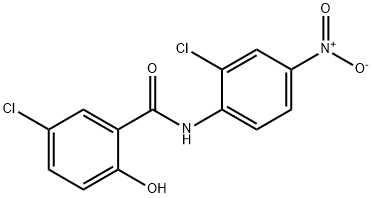
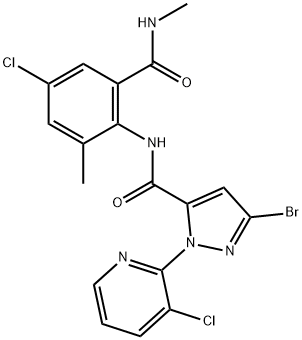
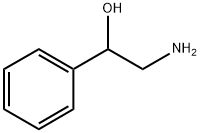

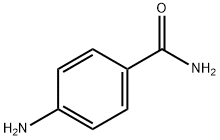


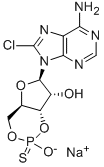
You may like
-
 1420-04-8 Niclosamide ethanolamine salt 98%View Details
1420-04-8 Niclosamide ethanolamine salt 98%View Details
1420-04-8 -
 Niclosamide ethanolamine salt 98% (HPLC) CAS 1420-04-8View Details
Niclosamide ethanolamine salt 98% (HPLC) CAS 1420-04-8View Details
1420-04-8 -
 1975-50-4 98%View Details
1975-50-4 98%View Details
1975-50-4 -
 2-HYDROXY BENZYL ALCOHOL 98%View Details
2-HYDROXY BENZYL ALCOHOL 98%View Details
90-01-7 -
 2-Chloro-1,3-Bis(Dimethylamino)Trimethinium Hexafluorophosphate 221615-75-4 98%View Details
2-Chloro-1,3-Bis(Dimethylamino)Trimethinium Hexafluorophosphate 221615-75-4 98%View Details
221615-75-4 -
 61397-56-6 CIS BROMO BENZOATE 98%View Details
61397-56-6 CIS BROMO BENZOATE 98%View Details
61397-56-6 -
 14714-50-2 (2-Hydroxyphenyl)acetonitrile 98+View Details
14714-50-2 (2-Hydroxyphenyl)acetonitrile 98+View Details
14714-50-2 -
 118753-70-1 98+View Details
118753-70-1 98+View Details
118753-70-1